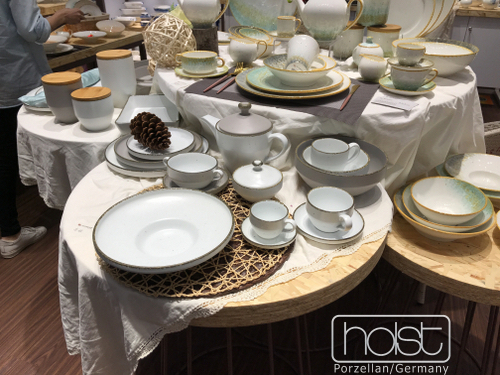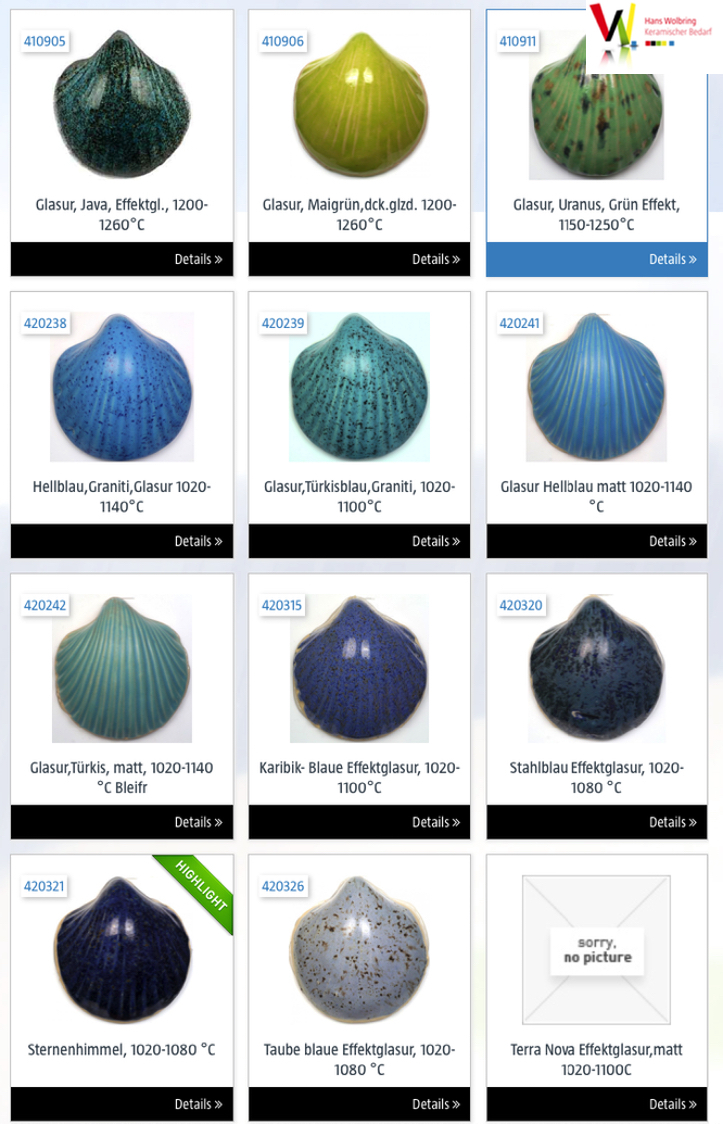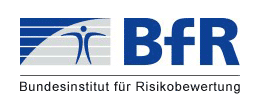Reactive glazes

Reactive glaze - Technical definition
Using a PVD process (Physical Vapour Deposition) or CVD process (Chemical Vapour Deposition), further layers are applied via a glass phase deposition of the ceramic glaze. Thermal stress causes ion plating (rakative vaporisation) and cathode sputtering, which then leads to deposition as a glow discharge by means of arc discharge sputtering. The amorphous structure of hydrothermal powder favours the reactions in the sintering process. Unagglomerated ceramic powders made of multi-component oxides can also be used without intermediate decomposition (calcination).

Reactive glaze - understandable definition
The reactive glaze is one of the so-called effect glazes. Such glazes are composed of different raw materials, some of which are of metallic, organic or mineral origin. After moulding - or after biscuit firing - the glaze is applied directly to the body and then smooth-fired. This is where the problem begins! More on this later.
With the increasing state of the art, specialised suppliers such as Ferro, Degussa, Heraeus and others are able to replace the originally purely metallic base materials (metal oxides) with organic and/or mineral components. Such glazes are available "off the shelf" in the relevant trade. This explains why reactive crockery from so many suppliers looks so similar. Apart from that, hardly any porcelain manufacturer is able to mix the glazes themselves. The compositions of reactive glazes are varied and complicated, and the risk of a different coloured batch or reaction is simply too high.
Unfortunately, the result of an effect glaze can only be recognised after firing - i.e. when it is too late. This explains why around 90% of all reactive glazes on the market are bought in by the factories as a "ready-mix". Here is an example of a supplier of reactive glazes.

(Source: Hans Wolbring GmbH, www.keramikbedarf.de)
The problem of reactive glazes
It should be noted that real hard porcelain is only created by the formation of mullite at firing temperatures of 1,320 °C and above. By replacing high-temperature-resistant metal oxides with other additives, the majority of "modern" effect glazes lose their resistance to firing temperatures. Organic additives in particular literally "burn" at the high hard firing temperatures. Most of the reactive effect glazes known to us can be fired up to a maximum of 1,140 °C. The rule of thumb here is: The more beautiful (more striking) the reactive effect of a glaze, the lower the firing temperature that must not be exceeded. There are fantastic effect glazes that are all finished at 900 °C to 1,000 °C.
This statement makes it clear why reactive glazes are mostly produced on ceramic, vitreous china or other porcelain imitations. However, reactive glazes on ceramic tableware are completely unsuitable for commercial use. The body fulfils neither the requirements of edge impact resistance nor the thermal stability for dishwasher resistance. It lacks density and, above all, cut resistance.

The result is clearly visible after a short time. The glazes are completely scratched on the top. Crackles and chipped edges gradually appear. Incidentally, this confirms our statement that anything fired below 1,320 °C does not correspond to the properties of real hard porcelain.
This explains why the development of the "Reactive Trend" series from Holst Porzellan - THE innovation of 2020 - took more than three years. It was only with the support of experienced partners that we succeeded in developing a composition of additives that can withstand hard firing above 1,320 °C. This makes our reactive tableware extremely rare, usable and durable for our customers.
Please allow us to point out that there are only a few porcelain manufacturers in the world who can produce reactive glazes on high-fired hard porcelain above 1,320 °C, such as our items in the "Reactive Trend series". More than 90% of this type of crockery on the market is produced on stoneware, earthenware or similar types of ceramic crockery. Please read the assessments and results of the Federal Institute for Risk Assessment from 09/2020:
